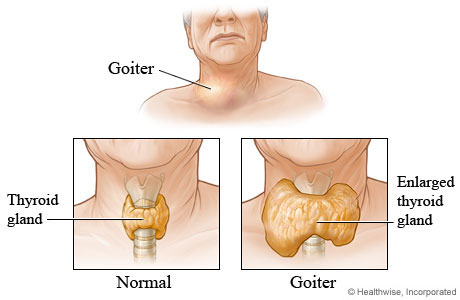
Credit Newswise —
Older patients, minorities, and male patients are more likely to develop substernal thyroid goiters that are difficult to remove surgically, putting them at risk for treatment complications and death, say researchers in the January 6 online in the American Journal of Surgery. A substernal goiter is so large it extends below a person’s collarbones into the upper chest.
The study, which looked at almost 111,000 patients from the National Inpatient Sample years 2000-2010 who had surgery to remove their goiters, documents what investigators say appears to be disparity in demographics and outcomes. The findings “raise issues of potential access to care or delays in treatment,” says the study’s senior author, Alliric I. Willis, M.D., an associate professor of surgery at Sidney Kimmel Medical College.
“This is the first study to thoroughly describe the demographic and clinical disparities associated with substernal goiters,” he says. “Awareness of such disparities may allow health care providers to better identify patients at risk for this distinct issue and provide more timely care — before the goiters grow so large that they risk health and life.”
A goiter is an enlargement of a thyroid gland that swells the neck. In much of the world goiters are caused by a lack of iodine, but in the U.S., where salt is enriched with iodine, goiters develop due to a number of factors — which may include an overactive thyroid (Graves’ disease), an underactive thyroid (Hashimoto’s disease), family history, or differences in anatomy. Substernal goiters grow slowly but steadily over time, and the incidence of these large goiters is between 3 to 13 percent of all goiters, according to different studies that examined goiter surgery.
The research team, which included investigators from the University of Pennsylvania and Temple University, examined data on 110,889 patients who underwent thyroidectomy for goiters. In this group, 5,525 patients were diagnosed with a substernal goiter. These patients were substantially more likely to be older, male, Black, Hispanic, or to have Medicare insurance. While the vast majority of goiters occur among women, men were significantly more likely to present with substernal goiters.
Compared to patients with typical-sized goiters, researchers found that patients with substernal goiters had higher comorbidity (such as hypertension, diabetes, and obesity), were more likely to be admitted to a hospital on an emergency basis, and to have postoperative complications including hemorrhage, lung collapse, and pulmonary embolism.
Furthermore, substernal patients were 73 percent more likely to die during hospital admission. “Reasons for the increased risk of complications and death may be due to the increased complexity of surgery associated with substernal goiters,” says Dr. Willis. He adds that the risk of dying from the surgery is very low overall.
Researchers found that there was a significant difference in the frequencies of substernal goiters across different regions of the U.S. Substernal goiters were most common in the South followed by the Northeast.
“These findings raise the possibility of disparate access to surgical care for black and Hispanic patients as well as possible delays in seeking treatment along ethnic and gender lines,” says Dr. Willis.

